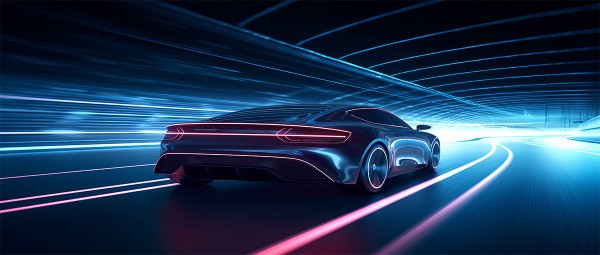The power of a softer backbone
While the chassis used to be the backbone of a passenger car, software will assume that role in the future.
Electrification, connectivity, the Internet of Things: we’re used to passenger cars having become part of those ecosystems. Though what are the implications for automotive development? Will it continue to be evolutionary? Or will this development be as disruptive as it has been in the IT, retail, music and movie industries? In fact, the electronics architecture has an increasingly stronger impact on the development process of cars.
For about a century, powerful performance or economy, sportiness or ride quality were typical criteria by which customers would judge and buy cars. However, with a younger generation, other user experiences are gaining the upper hand. “Customers are no longer focused only on horsepower but on the in-vehicle experience. The digital life experience and desire for software-based experiences have increasingly become drivers in the automotive industry,” Maria Anhalt, CEO of automotive software specialist Elektrobit, emphasises in Schaeffler’s technology magazine “tomorrow”.

Inverse approach to basic structure

The digital advance in passenger cars has a major impact on business models and development organisations: instead of component-based solutions with integrated software, cross-domain software solutions must be created. That’s why software architects are gaining more influence on product development. Maria Anhalt: “A transformation like that, which in this kind of relevance occurs only once in 30 years, requires extensive rethinking, a new mindset: the time of lone wolves is over – collaboration and new alliances are crucial for persisting in times of change.”
New brands like Tesla are already thinking and designing cars in ways that don’t start with the chassis but implement an innovative electrical-electronic (E/E) architecture right from the start. Is that an opportunity for new market players? Maria Anhalt says in “tomorrow” it is and provides an example: “Elektrobit partners with the new Sony Honda Mobility (SHM) joint venture. For the new EV prototype AFEELA, the software was created first, followed by the hardware – that’s completely new. Elektrobit developed not only the software architecture for the user experience but also co-designed the cockpit system such as the software for high-performance processors from Qualcomm.”
Maria Anhalt adds: “For years, attention has been focused on the Automotive Operating System [Automotive OS], which is far more than an operating system. It encompasses an entire environment for the development of software for vehicles, cloud ecosystems, data management, development tools, update and upscale systems. This environment must encompass real-time and safety and security requirements, as well as attractive customer-oriented features for entertainment and driver assistance.”
Cross-corporate solutions and cybersecurity
When it comes to new vehicle architectures, the question arises: shared standards or individual OEM solutions? “60 per cent of the software in a passenger car is non-differentiating; it’s generic, irrespective of brand,” says Maria Anhalt. This is a strong argument in favour of a standardised approach. The wheel doesn’t need to be reinvented with major cost and resource consumption when viable solutions are available. Maria Anhalt: “The remaining 40 per cent, brand-specific special characteristics can be defined. Open-source software could be a potential game changer.”
In the wake of growing digital interaction with extensive software ecosystems, data security of vehicles, as well as access authorisations are becoming increasingly important. Cybersecurity must be guaranteed, as well as the personal rights of users in the spirit of data ownership. Maria Anhalt says: “The big difference results from the partial update capability of the control units. Software components are integrated in the vehicle only as a result of a software update – as opposed to the integration of complete control unit software at the time of the development and for installation by trained personnel.” New attack vectors that must be considered open up along this update chain. The development standards are prepared for that and the remainder of the basic conditions have been adjusted accordingly by the UNECE Cybersecurity Regulations.


The new architectures require less complex cable harnesses, development and manufacturing is simplified and over-the-air updates reduce costs. Maria Anhalt explains: “These benefits apply primarily to production. The development costs aren’t going to noticeably decrease due to the fact that the requirements for safety and cybersecurity increasing costs. That means we’ll tend to see the creation of value shift from hardware to software.” The benefit for the customer will therefore lie more in the value proposition, predicts Anhalt. With updates, and particularly with upgrades, of the software, the car is always state-of-the-art and therefore more stable in value. In addition, maintenance costs can be expected to go down because the new architectures are less complex and new features can be offered.
